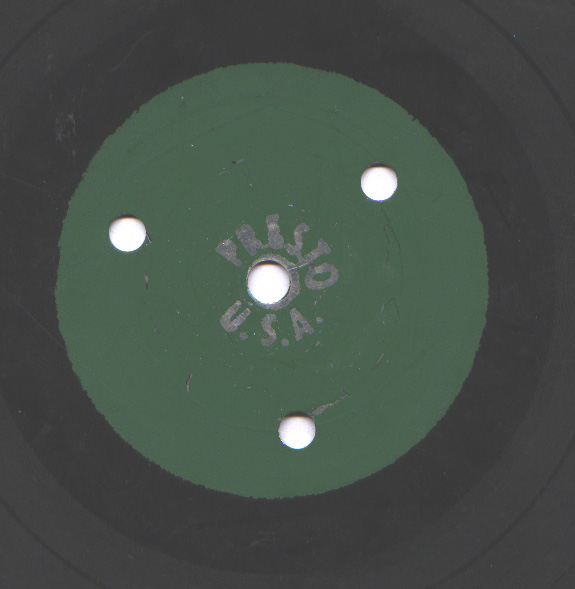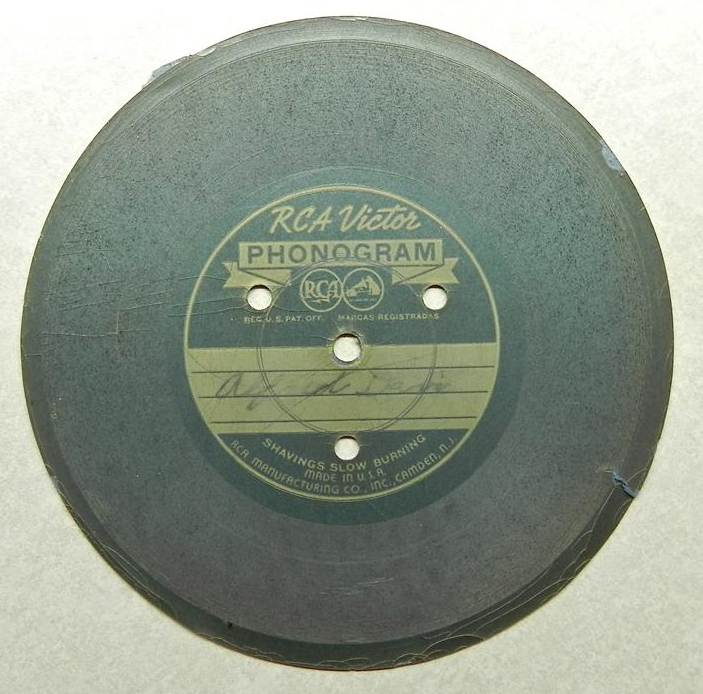
+- MacResource (https://forums.macresource.com)
+-- Forum: My Category (https://forums.macresource.com/forumdisplay.php?fid=1)
+--- Forum: Tips and Deals (https://forums.macresource.com/forumdisplay.php?fid=3)
+--- Thread: Restoring a Phonograph record from the 1940s (/showthread.php?tid=140736)
Pages:
1
2
Restoring a Phonograph record from the 1940s - The UnDoug - 08-28-2012
Hello,
My paternal grandfather (who died when my dad was 10, in 1944) was a musician (among other things). He was a trumpet player in a band, wrote music, and I just found out a couple weeks ago, even recorded a record.
My dad showed me the record, and mentioned that he had tried to play it on his turntable (a Bang & Olufsen, for what it's worth). He said it did not play successfully, but didn't know if that was because the record was no good, the needle/turntable were not compatible, or something else.
Does anyone know anything about playing records from that era? The record was about the size of a "45" record, but had either three or four holes in the center, each of which was about the size of the hole on a "33 1/3" record. Similar to this:

Does anyone have suggestions for how to go about trying to play this? Are there companies that can digitize it for us (if it's even playable)? Because this is a family heirloom, of sorts, I'd only want to send it to someone who truly specializes in restoring/digitizing records from this era--not someone/some company that normally works with records from the 60's, 70's, or 80's, and would just be "giving it their best shot."
Thanks for any tips.
By the way, that picture above is from this web page which seems pretty cool:
http://www.phonozoic.net/recordio/
Doug
Re: Restoring a Phonograph record from the 1940s - deckeda - 08-28-2012
Only the oldest B&O models will turn at something other than 33 1/3 or 45rpm. What you have there, if from the 40s, would be 78rpm --- maybe.
78rpm wasn't always a true standard even among the major record labels, and the home recorder used here could have been anyone's guess. 16rpm was also a minor standard for a while.
What a restorer would do is put it on a turntable with a wide pitch control and "78" cartridge (monophonic, spherical/conical stylus), start at 78rpm and see if something approximating normal sound can be achieved. Most turntables made in recent decades with 78rpm can only vary pitch about 6%-20% but this might require something wider. Rek-O-Kut makes a machine than can spin from the low teens to 99rpm I think.
'Giving it their best shot" due to the lack of standards the disk was made is the norm.
****************************
Ask dad in what way did it not play successfully. If it's mainly a speed issue you can still digitize it and change pitch in software. I can do that for you if you send me the file.
And are there any markings that would help identify what it is? Song title?
Re: Restoring a Phonograph record from the 1940s - Joseph C. - 08-28-2012
Here is a project from the Library of Congress that may provide information and/or leads to researchers who can help.
http://irene.lbl.gov
http://irene.lbl.gov/Sound-Project-0311.pdf
Re: Restoring a Phonograph record from the 1940s - voodoopenguin - 08-28-2012
The extra three holes are because this is the original recording, the extra holes were how the machine gripped the disc when carving the groove to make the recording so that there was no slip. It's a 78 so should play on any record player that can play that speed however I believe that these original discs are made on a softer material so if they have been played a lot then there would be a lot of wear and the sound quality would be affected. From studio made discs they would have made tougher extra discs to sell and the original cut should not be played much to conserve the quality.
Paul
Re: Restoring a Phonograph record from the 1940s - The UnDoug - 08-28-2012
Here's a picture my dad just sent me of the record in question:

Re: Restoring a Phonograph record from the 1940s - voodoopenguin - 08-28-2012
Yes, that's an original recording. Remember the expression about an artist "cutting a record"? That disc was cut during the original recording session.
Paul
Re: Restoring a Phonograph record from the 1940s - deckeda - 08-28-2012
That big crack at 4:00 will of course prevent the beginning part from playing. And the smaller ones at 9:00 may also be a problem. Audacity has a setting for capturing 78s at 45rpm and adjusting the speed, I think, but it won't be as good as playing it with a cartridge and stylus intended for it, as I mentioned earlier.
Just think, if he'd had a wire recorder instead you'd have the fun of finding a machine (quite possible) and maybe dodging a broken wire spool as it spins razor-sharp wire at hundreds of rpm at you.
Re: Restoring a Phonograph record from the 1940s - voodoopenguin - 08-28-2012
deckeda wrote:
That big crack at 4:00 will of course prevent the beginning part from playing. And the smaller ones at 9:00 may also be a problem.
Zeroing in on those areas the bit at 4.00 might be dirt and fluff (hopefully) and the problems at 9.00 could be scratches. If the scratches aren't deep then everything is fine as the bottom of the groove will be unaffected.
Paul
Re: Restoring a Phonograph record from the 1940s - tenders - 08-28-2012
deckeda wrote:
Audacity has a setting for capturing 78s at 45rpm and adjusting the speed, I think, but it won't be as good as playing it with a cartridge and stylus intended for it, as I mentioned earlier.
I agree, for something like this you want to find an expert at least to cut you the best possible raw recording off the disc.
FWIW I have an inexpensive ION brand USB turntable and found a special 78rpm stylus for it online for another $25. I think I have $100 in the entire rig; I'm the opposite of an audiophile but I do have a couple dozen 78s from the 40s and 50s of some casual sentimental value. If you're in the NYC area you're welcome to borrow it but I'm not suggesting it for your situation.
The special stylus is noticeably thicker and blunter than the "usual" stylus. Audacity does a nice job with a setting to "scale up" the 45rpm playback to 78rpm pitch (which is tweakable), and adjusting the audio levels to account for the different design of the 78rpm phonos. From there it's pretty easy, though extraordinarily time-consuming, to zoom in on the resulting waveform and snip out clicks and pops to whatever degree you have patience for.
Having done this just a bit I can see how someone compulsive could spend 40 hours nipping and tucking a noisy 10- or 15-minute recording. I would suggest NOT paying an audio engineer to do this for you.
Re: Restoring a Phonograph record from the 1940s - pipiens - 08-28-2012
Maybe an optical system would work for you.
http://www.elpj.com/about/advantage.php